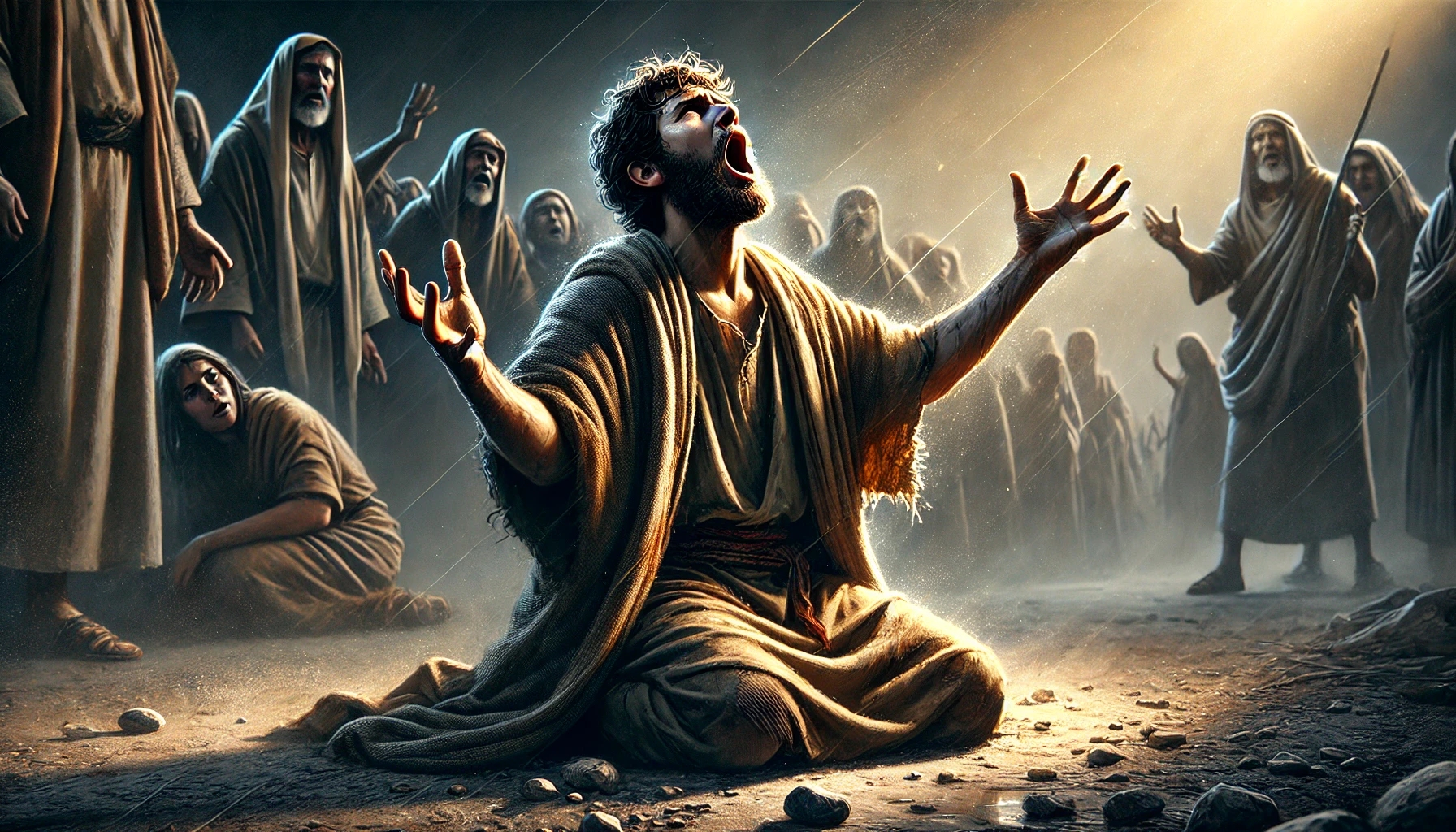


8.5 “What Do You Want Me to Do for You?”
Faith That Sees: Bartimaeus’ Persistent Cry for Healing
Read Mark 10:46–52. How did Bartimaeus respond when Jesus passed by?
In Mark 10:46–52, the blind Bartimaeus demonstrates a powerful example of faith, persistence, and a deep yearning for healing. As Jesus is leaving Jericho and passing by Bartimaeus, the blind beggar does not let his situation discourage him. Instead, he cries out loudly, “Jesus, Son of David, have mercy on me!” Despite the crowd’s attempts to silence him, Bartimaeus shouts all the more, showing his unwavering belief that Jesus can help him.
Bartimaeus’ cry is more than a plea for help; it is a confession of faith that Jesus is the promised Messiah, the “Son of David.” This title indicates Bartimaeus’ recognition of Jesus not merely as a healer but as the awaited Savior of Israel.
Another significant aspect of Bartimaeus’ response is his symbolic act of throwing off his cloak when Jesus calls him. In his circumstances, the cloak might have been his most valuable possession and protection from the cold, yet Bartimaeus discards it without hesitation. This act signifies his trust that his encounter with Jesus will bring about a transformation—healing and change that he believes are certain.
When Jesus asks him, “What do you want me to do for you?” Bartimaeus responds directly and without hesitation, “Rabboni, let me recover my sight.” This straightforward request reveals his deep desire for healing and his confidence that Jesus can grant this miracle. Jesus immediately fulfills this request; Bartimaeus is healed and follows Jesus on His way.
This story is more than a healing narrative; it is a lesson on what it means to follow Jesus. Bartimaeus shows us that discipleship involves approaching Jesus with faith and trust, letting go of what holds us back, and following Him when He calls. It is an example of how we can see the world with new eyes—through the lens of faith that allows us to follow Jesus along the path He has prepared for us.
Have you ever cried out, “Jesus, Son of David, have mercy on me!”? What happened, and what did you learn from that experience?
When we cry out, “Jesus, Son of David, have mercy on me!” from the depths of our hearts, we are entering a posture of faith and dependence on God. It is a moment of complete surrender and acknowledgment that we need His grace and help to overcome what troubles us.
In my own life, when I have prayed similar prayers—in times of distress, desperation, or deep need for God’s intervention—I have often experienced God’s power bringing comfort, guidance, or even unexpected solutions. Such experiences teach us several valuable lessons:
-
God Hears Our Prayers:
-
It is comforting to know that God hears our prayers, especially when they come from a place of deep need. Even if the answer is not immediately visible, we can trust that God knows our concerns and will respond in His way and time.
-
-
Faith Requires Persistence:
-
Just as Bartimaeus did not stop calling out despite obstacles, faith calls us to be persistent. Sometimes we need to endure and continue praying, even when circumstances seem discouraging. This persistence is often key to experiencing God’s work in our lives.
-
-
God Responds to Faith:
-
Our experiences show that God responds to our faith. When we approach Him with trust, believing that He hears and will act, we often encounter His grace and care in special ways.
-
-
Letting Go and Trusting:
-
Sometimes calling out to God requires us, like Bartimaeus, to “throw off our cloak”—to let go of what gives us security in order to trust fully in God. This surrender can be transformative, teaching us to relinquish control and embrace God’s plan.
-
-
Change Follows God’s Intervention:
-
When we experience God’s intervention, our situation often changes, but so does our inner self. We are strengthened in faith, and our perspective on life and God’s workings becomes clearer and deeper.
-
From such experiences, we learn that God is faithful and that His grace can carry us through every situation. We recognize that our cries to Him are never in vain but bring us closer to Him and help us see the world with new eyes—eyes that are focused on Jesus, the “Son of David,” who loves us and cares for us.
The story of Bartimaeus in Mark 10:46–52 has a profound connection to our everyday lives and faith by teaching us about remaining persistent in faith amid challenges and confidently calling out for God’s help. Here are some key points that highlight this connection:
-
Persistence in Prayer:
-
Bartimaeus shows us that we should not give up calling out to God in our daily lives, even when circumstances seem unfavorable. Whether facing health, emotional, or material issues, the story encourages us to remain persistent in prayer. This persistence demonstrates our trust that God hears and will intervene, even if it is not immediately apparent.
-
-
Living Out Faith:
-
Bartimaeus’ faith in Jesus as the “Son of David” reminds us that our faith should be reflected in our actions. In everyday life, this means relying on God’s promises and aligning our lives with our convictions, even when circumstances challenge our beliefs.
-
-
Trust in God’s Plan:
-
Bartimaeus’ act of throwing off his cloak symbolizes letting go of security and protection to follow Jesus. This teaches us that true trust involves being willing to let go of the familiar and secure to follow God’s plans. In daily life, this might mean embracing new paths, even when they come with uncertainty, trusting that God provides for us.
-
-
Open Eyes to God’s Work:
-
Bartimaeus’ healing symbolizes seeing the world through the lens of faith. In our daily lives, we should ask God to help us recognize His hand in both small and large matters, adjusting our perspective to be aware of His guidance and grace.
-
-
Discipleship as a Response to Grace:
-
After Bartimaeus is healed, he follows Jesus on His way. This demonstrates that genuine discipleship is a response to God’s grace. In our lives, we should consider how we respond to God’s goodness and intervention by aligning our actions with His teachings and following Him in all we do.
-
Through this story, we are encouraged to actively live out our faith in daily life, with the assurance that God hears us, meets us, and leads us—regardless of our circumstances. We learn that faith is not passive but an active, powerful response to God’s presence and work in our lives.

Remain persistent in faith, for God hears your call and will respond in His time.
Visited 49 times, 1 visit(s) today







